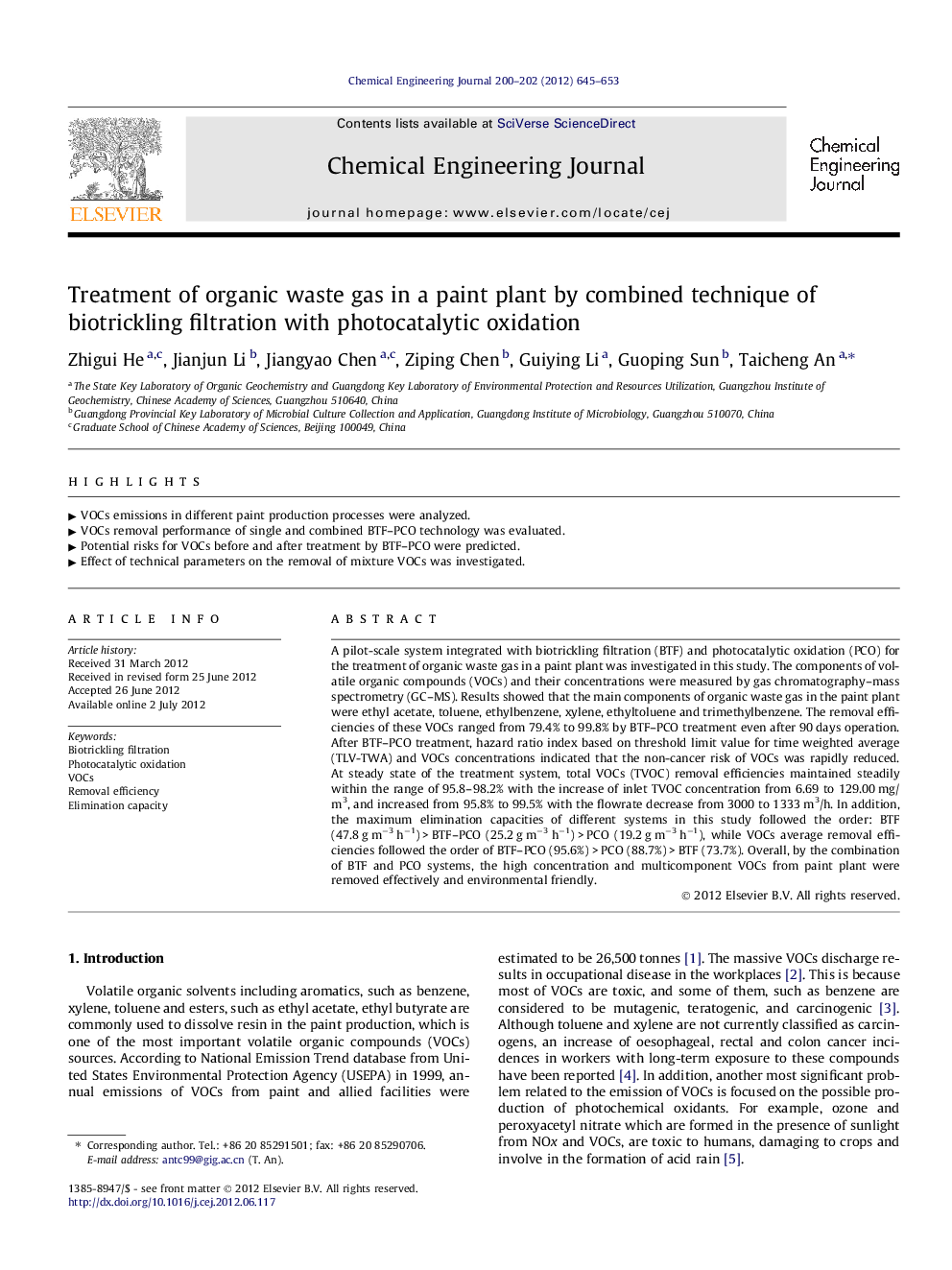| Article ID | Journal | Published Year | Pages | File Type |
|---|---|---|---|---|
| 149581 | Chemical Engineering Journal | 2012 | 9 Pages |
A pilot-scale system integrated with biotrickling filtration (BTF) and photocatalytic oxidation (PCO) for the treatment of organic waste gas in a paint plant was investigated in this study. The components of volatile organic compounds (VOCs) and their concentrations were measured by gas chromatography–mass spectrometry (GC–MS). Results showed that the main components of organic waste gas in the paint plant were ethyl acetate, toluene, ethylbenzene, xylene, ethyltoluene and trimethylbenzene. The removal efficiencies of these VOCs ranged from 79.4% to 99.8% by BTF–PCO treatment even after 90 days operation. After BTF–PCO treatment, hazard ratio index based on threshold limit value for time weighted average (TLV-TWA) and VOCs concentrations indicated that the non-cancer risk of VOCs was rapidly reduced. At steady state of the treatment system, total VOCs (TVOC) removal efficiencies maintained steadily within the range of 95.8–98.2% with the increase of inlet TVOC concentration from 6.69 to 129.00 mg/m3, and increased from 95.8% to 99.5% with the flowrate decrease from 3000 to 1333 m3/h. In addition, the maximum elimination capacities of different systems in this study followed the order: BTF (47.8 g m−3 h−1) > BTF–PCO (25.2 g m−3 h−1) > PCO (19.2 g m−3 h−1), while VOCs average removal efficiencies followed the order of BTF–PCO (95.6%) > PCO (88.7%) > BTF (73.7%). Overall, by the combination of BTF and PCO systems, the high concentration and multicomponent VOCs from paint plant were removed effectively and environmental friendly.
► VOCs emissions in different paint production processes were analyzed. ► VOCs removal performance of single and combined BTF–PCO technology was evaluated. ► Potential risks for VOCs before and after treatment by BTF–PCO were predicted. ► Effect of technical parameters on the removal of mixture VOCs was investigated.
